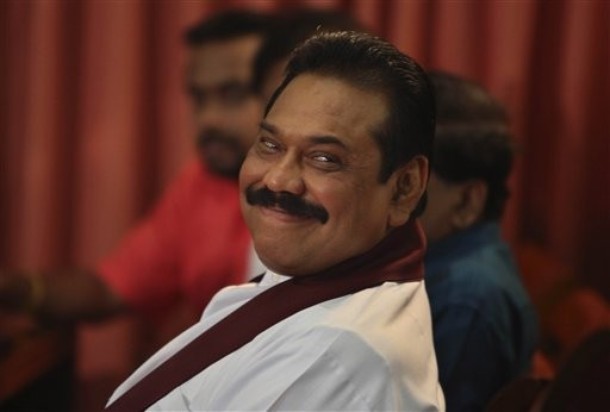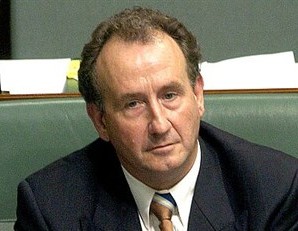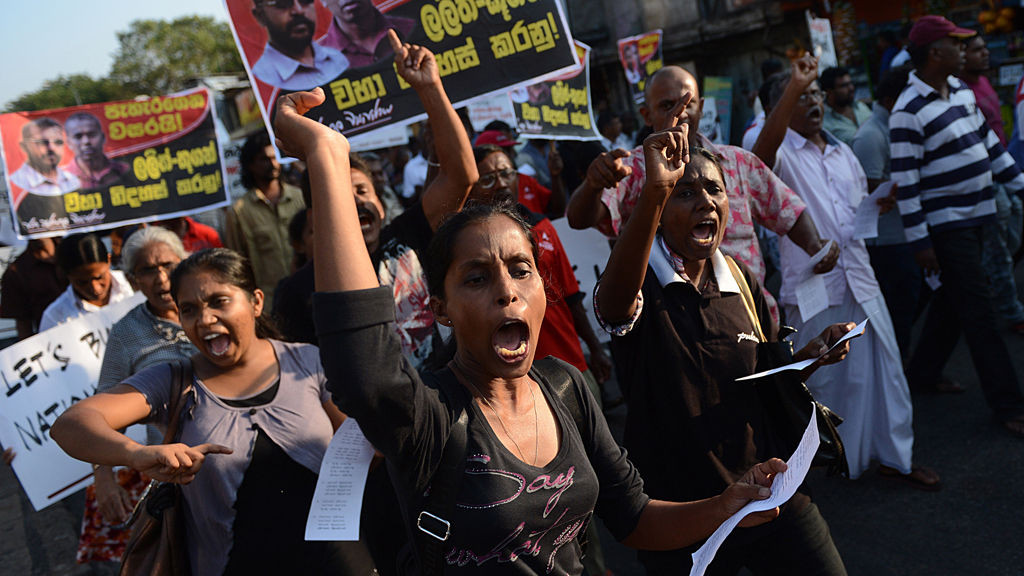30 APRIL 20130BY NIRMANUSAN BALASUNDARAM
Introduction-

In the so-called ‘post-war’ Sri Lanka context, land grabbing, Sinhalization and military occupation of the Tamil nation have become pivotal points in the political development discourse. The deep concerns that exist amongst the majority of the Tamils, which are directed towards their present and future existence, are these same issues.

The political discourse within the international community is unable to keep pace with the real-time implementation and effects on the ground. The international community continues to talk about reconciliation and the Sri Lankan state seems keener on Sinhala settlements and militarization in the Tamil nation. All three actors have not only different aspects but their own interests as well. For the Tamil people living in the Northeast of the island, the apparent predominant concern is the ability to retain a dignified life; now and into the future. Having said so, this article analyses the real intention behind the land grabbing process being accelerated by the Sri Lankan State, particularly since the end of Eelam War IV in May 2009.
Interpretation
When the brutal war on the island came to end in May 2009, over 146,679 Tamil people, were still unaccounted. Crucial stakeholders of the ethno-political conflict of Sri Lanka thought that it heralded an opportunity for reconciliation between the polarized communities to build durable peace on the island.
In contrast, the Sri Lankan regime began building military bases, Sinhala settlements, Buddhist statues and stupas in the North East of the island. The Government that brought in the disastrous Sinhala Only Act in 1956 seemed to believe that the time for full level implementation and reactivation of the Act had arrived after nearly a four-decade hiatus. Thereby deliberately targeting the Northeast. Out of a total land mass of 65,619 sq km, the Tamils inhabited 18,880 sq km of land in the north and east, but after May 2009, the Sri Lankan Armed Forces have come to occupy more than 7,000 sq km of Tamil land.1
Latest data reveals that at least 6,069 acres of public and private lands are occupied by the Sri Lankan Armed Forces (SLAF) for the purpose of opening up Sinhala colonies in the Vanni region. It is worth noting that this excludes already occupied lands in Jaffna region and the ‘Eastern province’.2 There is an official process, which indicates that 6,400 acres of civilian land will be seized for military purposes in Jaffna HSZ.3 People also complain that Sinhala Buddhist archaeologists are engaged in nefarious activities of Sinhalization. They are said to be visiting Tamil areas and 'excavating' Buddha statues that they themselves had planted earlier. The purpose of this exercise is allegedly to claim that the territory in question had been a Sinhala Buddhist area. The Sri Lankan regime has proclaimed that they ‘liberated’ the Tamil people through a so-called ‘humanitarian operation’. If indeed that is the case, the question arises as to why they believe there is a need to deploy the notorious military throughout the Northeast in such a large scale and appoint war criminals as governors of the region? 85,000-86,000 soldiers are at present in the North and East.4
This number does not include the separate deployment of a Task Force in the East, and of the Navy and the Air Force. The Sri Lankan Army is comprised entirely of Sinhalese, and the people of the North are almost entirely Tamil.5 The military’s increasing control of administrative decisions in the North and East, including distribution and use of land, has turned the issue of land ownership into a deeply politicized and ethnically-charged one. Administrative and developmental decisions in North-East Sri Lanka are frequently taken by the military in consultation with the Presidential Task Force for Resettlement, Development and Security (PTF) and the military is involved in various committees set up as a result of the September 2011 government policy regarding land in the North East. Furthermore, the military continues to impose restrictions on humanitarian, developmental and psychiatric social work, accentuating existing resentments and impeding quick recovery of the civilian residents. The presence of large numbers of army personnel, particularly in the north, has increased the vulnerability of women to violence and other forms of abuse including rape.6
To counter the increasing international pressure, the regime is building roads and bridges under the banner of reconstruction and developments. Hon. Christine Robichon, the French Ambassador to Sri Lanka said in an interview, “Healing the wounds of the war is not limited to reconstructing roads and bridges.”7 The reconstruction and development process has not focused on the basic human needs such survival, well being, freedom and identity or interests of the Tamils. Rather efforts and priority has been given to the interests of Sinhala businessmen, settlers and the military. Tamil aspirations are being ignored, grievances are being denied and the current expectations regarding reconstruction and development in Tamil areas are not being heard. The State instead continues with its long-term agenda with specific intentions.
Intentions
Soon after the war came to an end, Sri Lanka's Buddhist nationalist party the Jathika Hela Urumaya [JHU], which backs the Sri Lankan government, said: “each road in the liberated areas in the North should be named for the war heroes who sacrificed their lives for the nation's liberty”.8 The genocidal war on the Tamil nation has been depicted as the Sri Lankan nation’s liberation and perpetrators of genocide, war crimes and crimes against humanity have been extolled as war heroes.
The mindset of the Sinhala chauvinists is that the entire island belongs only to Sinhala Buddhists. This entrenched mentality encourages the destruction of any identity that seems to be a counter or a threat to Sinhala Buddhist domination. This mindset has emerged from a chauvinistic interpretation of the Mahavamsa, which states that Buddhism needs to be preserved for a period of 5000 years in the island until the next arrival/reincarnation of Buddha.9 This idea has led to the Sinhala Buddhists believing they are of racial superiority with the island belonging to them alone as they were the chosen ones.10 The extreme form of this ideology has led to the belief that other communities in the island are invaders or mere visitors with no entitlement to the same privileges as the Sinhala Buddhist.
The Jathika Chintanaya, a concept originated by Dr. Gunadasa Amaresekera in the 1980s, buttresses this Sinhala Buddhist majority mindset. Jathika Chintanaya which transalates loosely to mean ‘National Thought/ National Conciousness’ seeks to create a common national polity, economy and culture irrespective of religious and ethnic divides.11 It seeks to promote Sinhala nationalism to reassert the dominance of the Sinhala community and the protection of Sinhala rights, which it believes diminished during colonial rule.12 The Chintanaya promotes the fact that all communities in Sri Lanka belong to one culture and hence refers to Sri Lanka as ‘one nation’. This alienates other communities because it attempts to subsume their identity within the most dominant Sinhala Buddhist identity.
This mindset supported by the Jathika Chintanaya has led to the adoption of a cruel attitude, which assists their acts of annihilation of the Tamil nation through the process of genocide of the Tamil people. Twelve days [11 July 1983] before the 1983 pogrom, which was considered the first mass level genocidal attempt against the Tamil people, the Sri Lankan President J.R. Jayewardene said in an interview to the UK based Daily Telegraph, “I am not worried about the opinion of the Tamil people..… now we cannot think of them, not about their lives or their opinion ... Really if I starve the Tamils out, the Sinhala people will be happy”.
After a quarter century, former Sri Lankan Army Commander and 2010 presidential candidate Sarath Fonseka said; “I strongly believe that this country belongs to the Sinhalese but there are minority communities and we treat them like our people...We being the majority of the country, 75%, we will never give in and we have the right to protect this country... They can live in this country with us. But they must not try to, under the pretext of being a minority, demand undue things.”13
The statements of the Sinhala leaders clearly articulate their intention to eliminate the Tamil people from the island. This deliberate process has been executed through either mass level slaughters or the eradication of the ethnic and cultural identity of the Tamil people. The forcing of the Tamil people to assimilate into Sinhala identity is also part of this agenda. The statements and actions across Sinhalese party lines validate the view that a change in leaders or regime will not be a change in policy of the Sri Lankan state, the prime architect of genocide of the Tamil people.
Strong evidence of this notion can be ascertained from statements made as early as the first Prime Minister of Sri Lanka, D.S.Senanayake in his address to colonists in Padaviya (an area linking the Northern and Eastern provinces): “Today you are brought here and given a plot of land. You have been uprooted from your village. You are like a piece of driftwood in the ocean; but remember that one day the whole country will look up to you. The final battle for the Sinhala people will be fought on the plains of Padaviya. You are men and women who will carry this island’s destiny on your shoulders. Those who are attempting to divide this country will have to reckon with you. The country may forget you for a few years, but one day very soon they will look up to you as the last bastion of the Sinhala.”14
Fundamentally, the Sinhala chauvinist belief is that the entire island belongs to Sinhala Buddhists only and the Tamil existence in the island is to be considered a major threat against them. Therefore, following the Mu'l'livaaykkaal mass atrocities, the present post-war period is deemed to be the ideal stage to grab the Tamil lands through militarization and Sinhalization. The next step will inevitably be an attempt to erase the Tamil ethnic and cultural identity completely. This development will lead to the annihilation of the Tamil nation from the island. Hence, it can be concluded that ethnic cleansing and Sinhalization is thus a vital component of the genocidal agenda of the Sinhala state.
© JDS
Nirmanusan Balasundaram is an exiled journalist and a human rights defender. He holds an MA in Peace and Conflict Studies from the European University Center for Peace Studies in Austria.
Notes:
6. Chatham House, Asia Programme Paper ASP PP 2011/05, Sri Lanka: Prospects for Reform and Reconciliation, Charu Lata Hogg, October 2011.
9. See L. Marasinghe, The British colonial contribution to disunity in Sri Lanka, 6 Sri Lanka J. Int'l L. 81 (1994); also see J.L. Devananda, The Mahavamsa mindset: Re-Visiting political Buddhism in Sri Lanka,
http://dbsjeyaraj.com/dbsj/archives/1886
10. See Charles R.A. Hoole, A Reassessment of Sinhalese Utopia: Explorative Essay on the Sri Lankan Political Crisis, 33 J. Church & St. 95 (1991)
14. The excerpt quoted by M.H. Gunaratna was related to him by Davinda Senanayake, D.S’s grandson. (p.201 of ‘For a Sovereign State’, by M.H.Guna¬ratna).
 The Sri Lankan government is intensifying its crackdown on critics through threats, harassment, imprisonment and violent attacks, Amnesty International said in a report released today.
The Sri Lankan government is intensifying its crackdown on critics through threats, harassment, imprisonment and violent attacks, Amnesty International said in a report released today.






 30 April 2013
30 April 2013





